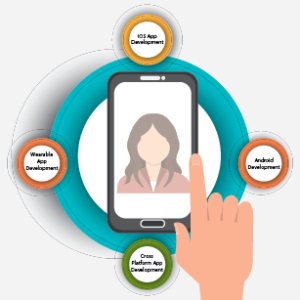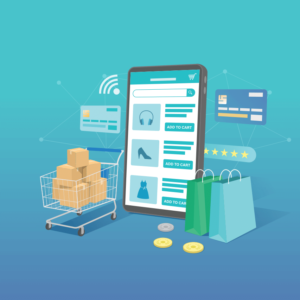Introduction:

In recent years, education has undergone a remarkable transformation with the rise of e-learning platforms.
e-learning portal development are the online tools that have revolutionized the way we acquire knowledge and skills, offering convenience, flexibility, and accessibility to learners of all ages and backgrounds. In this blog, we will delve into the dynamic world of e-learning platforms, examining their features, benefits, and the impact they have on education. Join us on this virtual journey as we explore the wonders of digital learning!

1. The Evolution of E-Learning Platforms
The journey of e-learning platforms began with basic online courses and has since expanded into comprehensive learning ecosystems. Initially, platforms primarily focused on delivering content through text-based modules. However, modern platforms have embraced multimedia elements, including images, videos, and interactive activities, to enhance engagement and improve learning outcomes.
 2. Key Features of E-Learning Platforms
2. Key Features of E-Learning Platforms
E-learning platforms offer a wide array of features that cater to diverse learning needs. Here are some common features found in modern platforms:
a) Interactive Course Content: Unlike traditional textbooks, e-learning platforms provide interactive course materials that engage learners through multimedia elements, such as videos, images, and infographics. These visual aids make complex concepts easier to understand and retain.
b) Gamification: Gamification techniques, such as badges, leaderboards, and progress tracking, motivate learners to achieve their goals. By transforming learning into a game-like experience, e-learning platforms enhance user engagement and make the process enjoyable.
 c) Discussion Forums and Collaboration:
c) Discussion Forums and Collaboration: E-learning platforms foster a sense of community among learners through discussion forums and collaboration tools. These features enable students to interact with peers and instructors, share insights, and engage in meaningful discussions.
3. Advantages of E-Learning Platforms
E-learning platforms offer numerous advantages over traditional classroom-based learning. Let’s explore some of the key benefits:
a) Flexibility and Convenience: One of the greatest advantages of e-learning platforms is the flexibility they provide. Learners can access course materials and complete assignments at their own pace and from anywhere with an internet connection.
b) Personalized Learning: E-learning platforms often employ algorithms and adaptive learning technologies to personalize the learning experience. These systems analyze individual progress, strengths, and weaknesses, and provide customized recommendations, ensuring learners receive tailored instruction.
c) Accessibility and Inclusivity: E-learning platforms break down barriers to education by making learning accessible to individuals with physical disabilities, geographical constraints, or time limitations. They offer closed captions, screen reader compatibility, and language localization, enabling a diverse range of learners to access educational content.
4. E-Learning Platforms and the Future of Education
The continued growth of e-learning platforms indicates a promising future for education. These platforms are constantly evolving to meet the changing needs of learners and educators. Here are a few trends that will shape the future of e-learning:
a) Virtual Reality (VR) and Augmented Reality (AR): VR and AR technologies are gradually being integrated into e-learning platforms, providing immersive experiences that enhance understanding and retention of complex concepts.
 b) Artificial Intelligence (AI) and Machine Learning (ML):
b) Artificial Intelligence (AI) and Machine Learning (ML): AI and ML algorithms power intelligent tutoring systems, automated assessments, and personalized recommendations, making learning more efficient and effective.
 c) Microlearning:
c) Microlearning: Bite-sized learning modules, known as microlearning, are gaining popularity due to their short duration and focused content. E-learning platforms are incorporating microlearning strategies to deliver concise and easily digestible lessons.

Conclusion:
E-learning Portal Development have emerged as transformative tools in the field of education. They offer flexibility, accessibility, and personalized learning experiences, empowering individuals to acquire knowledge and skills at their own pace. As technology continues to advance, we can expect e-learning platforms to become even more immersive and tailored to individual needs, reshaping the future of education. So, why wait? Embrace the digital era of learning and unlock the endless possibilities offered by e-learning platforms!
 In recent years, education has undergone a remarkable transformation with the rise of e-learning platforms. e-learning portal development are the online tools that have revolutionized the way we acquire knowledge and skills, offering convenience, flexibility, and accessibility to learners of all ages and backgrounds. In this blog, we will delve into the dynamic world of e-learning platforms, examining their features, benefits, and the impact they have on education. Join us on this virtual journey as we explore the wonders of digital learning!
In recent years, education has undergone a remarkable transformation with the rise of e-learning platforms. e-learning portal development are the online tools that have revolutionized the way we acquire knowledge and skills, offering convenience, flexibility, and accessibility to learners of all ages and backgrounds. In this blog, we will delve into the dynamic world of e-learning platforms, examining their features, benefits, and the impact they have on education. Join us on this virtual journey as we explore the wonders of digital learning!

 2. Key Features of E-Learning Platforms
2. Key Features of E-Learning Platforms c) Discussion Forums and Collaboration: E-learning platforms foster a sense of community among learners through discussion forums and collaboration tools. These features enable students to interact with peers and instructors, share insights, and engage in meaningful discussions.
c) Discussion Forums and Collaboration: E-learning platforms foster a sense of community among learners through discussion forums and collaboration tools. These features enable students to interact with peers and instructors, share insights, and engage in meaningful discussions.
 b) Artificial Intelligence (AI) and Machine Learning (ML): AI and ML algorithms power intelligent tutoring systems, automated assessments, and personalized recommendations, making learning more efficient and effective.
b) Artificial Intelligence (AI) and Machine Learning (ML): AI and ML algorithms power intelligent tutoring systems, automated assessments, and personalized recommendations, making learning more efficient and effective.
 c) Microlearning: Bite-sized learning modules, known as microlearning, are gaining popularity due to their short duration and focused content. E-learning platforms are incorporating microlearning strategies to deliver concise and easily digestible lessons.
c) Microlearning: Bite-sized learning modules, known as microlearning, are gaining popularity due to their short duration and focused content. E-learning platforms are incorporating microlearning strategies to deliver concise and easily digestible lessons.






